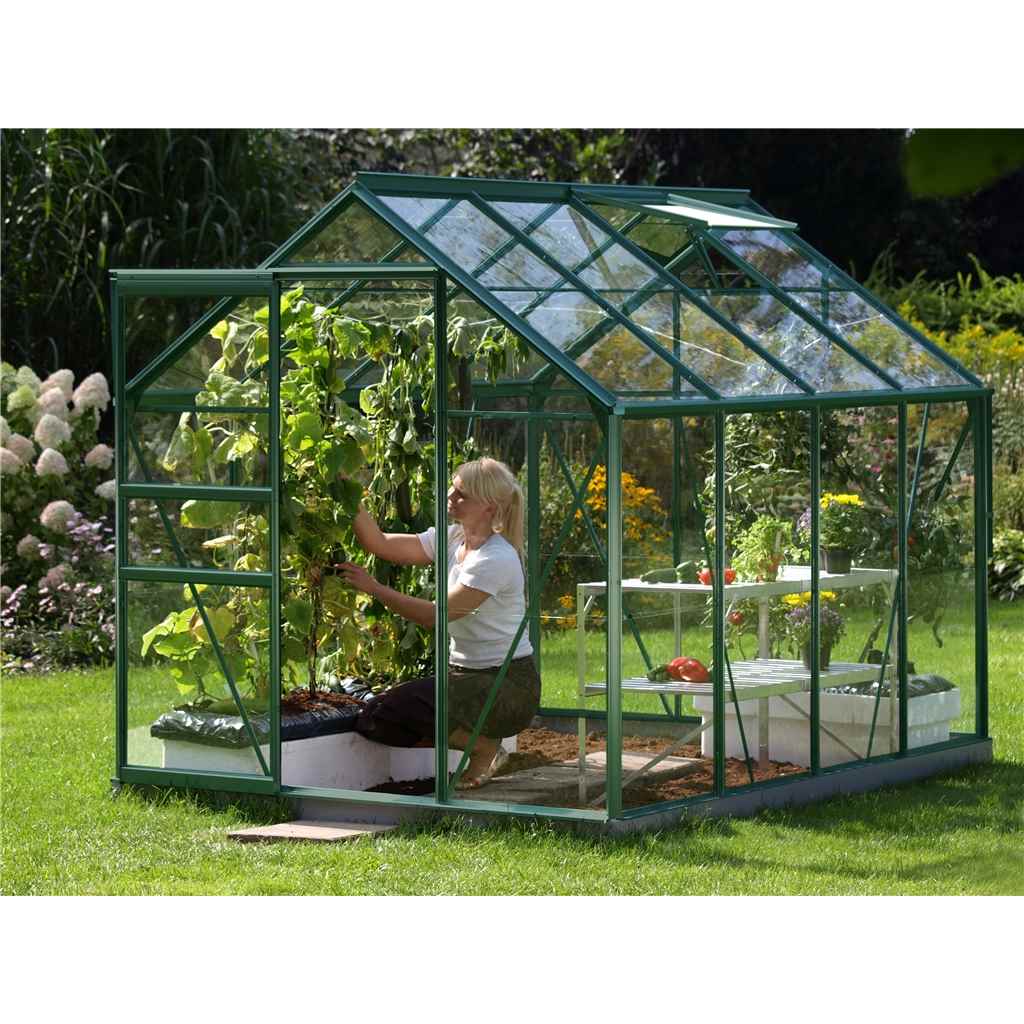

A warm greenhouse has nighttime temperatures of 10–13 ☌ (50–55 ☏). Among the plants suited to cool greenhouses are azaleas, cinerarias, cyclamens, carnations, fuchsias, geraniums, sweet peas, snapdragons, and a variety of bulbous plants including daffodils, irises, tulips, hyacinths, and narcissi. In a cool greenhouse, the nighttime temperature falls to about 7–10 ☌ (45–50 ☏). The plants grown in greenhouses fall into several broad categories based on their temperature requirements during nighttime hours. Because a greenhouse can become too hot as well as too cold, some type of ventilating system is also needed this usually consists of roof openings, which can be operated mechanically or automatically, and end-wall openings, through which electric fans draw air and circulate it throughout the interior. A greenhouse is heated partly by the rays of the Sun and partly by artificial means, such as circulating steam, hot water, or hot air. The framing of the structure is made of aluminum, galvanized steel, or such woods as redwood, cedar, or cypress. Glass has been the traditional glazing material, but plastic films, such as polyethylene or polyvinyl, and fibreglass are also common. A greenhouse has a large expanse of glazing on its sides and roof so that the plants are exposed to natural light for much of the day. Two or more span-type greenhouses are sometimes joined side by side so that they have fewer external walls, and heating costs are consequently less. The basic structural forms are the span-type greenhouse, which has a double-sloped, or A-shaped, roof, and the lean-to greenhouse, which has only one roof slope and leans against the side of a building. The modern greenhouse is usually a glass- or plastic-enclosed framed structure that is used for the production of fruits, vegetables, flowers, and any other plants that require special conditions of temperature. Large greenhouses are important in agriculture and horticulture and for botanical science, while smaller structures are commonly used by hobbyists, collectors, and home gardeners. A huge increase in the availability of exotic plants in the 19th century led to a vast increase in glasshouse culture in England and elsewhere. By the middle of the 19th century, the greenhouse had developed from a mere refuge from a hostile climate into a controlled environment, adapted to the needs of particular plants. As glass became cheaper and as more sophisticated forms of heating became available, the greenhouse evolved into a roofed and walled structure built of glass with a minimal wooden or metal skeleton. In the 17th century, greenhouses were ordinary brick or timber shelters with a normal proportion of window space and some means of heating. Greenhouse, also called glasshouse, building designed for the protection of tender or out-of-season plants against excessive cold or heat. SpaceNext50 Britannica presents SpaceNext50, From the race to the Moon to space stewardship, we explore a wide range of subjects that feed our curiosity about space!.Learn about the major environmental problems facing our planet and what can be done about them!

Saving Earth Britannica Presents Earth’s To-Do List for the 21st Century.Britannica Beyond We’ve created a new place where questions are at the center of learning.100 Women Britannica celebrates the centennial of the Nineteenth Amendment, highlighting suffragists and history-making politicians.
#Green house how to#
COVID-19 Portal While this global health crisis continues to evolve, it can be useful to look to past pandemics to better understand how to respond today.Student Portal Britannica is the ultimate student resource for key school subjects like history, government, literature, and more.

From tech to household and wellness products.


 0 kommentar(er)
0 kommentar(er)
